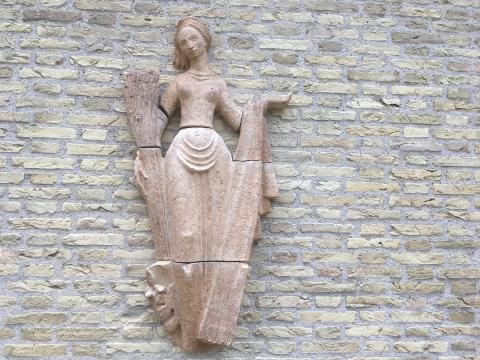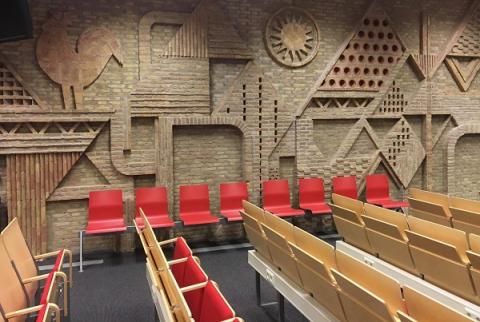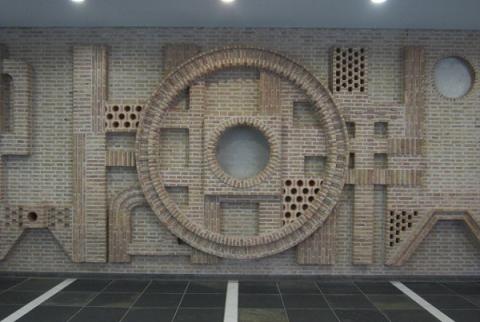Luc van Hoek
Prosperity (1967, chamotte clay) and two brick reliefs (1971 and 1975)
Simon Building and Goossens Building

The university owns three sculptures by Luc Van Hoek (1910-1991). In 2018, a sculpture by artist Luc van Hoek (1910-1991) was mounted against the exterior wall of the low-rise of Simon Building . It is a sculpture that dates from 1967 and previously had a place against the facade of the building by Van den Broek en Bakema on the Ringbaan West where the Chamber of Commerce was long located. After a renovation, the sculpture could not be placed back there, after which it was offered to the university free of charge.
The work is made of fired chamotte clay, is approximately one meter high and depicts a female figure symbolizing urban development and prosperity, especially by the textile fabric and ears of wheat flanking her. The Art Committee gladly accepted this sculpture also because the university already has two works by Van Hoek at its disposal.


One of them (from 1971) is located on the second floor of Goossens Building, the other (from 1977) on the walls of lecture hall SZ (Simon Hall) 31. This is a so-called brick relief, in which nature is also an important motif. Here, too, we see sheaves of wheat, but also animals, cart wheels, etc. These motifs are closely related to the former purpose of Simon Building, which for a long time was called the Landbouwhuis because it housed a department of the Ministry of Agriculture. This also explains the title of the sculpture in the garden near the building: “Nature sets you free.” It was made by Niel Steenbergen and commissioned by the Ministry in 1966.
The wall relief by Luc van Hoek is an example of the frequent collaboration with architect Jos Bedaux (1910-1989), who designed Simon Building in 1965 (and also Cobbenhagen Building—a national monument—Koopmans Building and Goossens Building).
The works fit into a long series of commissions given to this artist in the period of post-war reconstruction. He was involved in the design of many new institutions in the fields of health care and education, and he also made many works for churches. His oeuvre is very extensive and includes, besides sculptures in chamotte or concrete and wall reliefs, tapestries, chasubles, paintings, stained glass windows, graphic work, drawings, illustrations, and even poetry.
More about history and academic heritage
The Tilburg University academic heritage is a very diverse set of archives, visual materials, collections, devices, recorded stories, et cetera that relate to the history of the university.